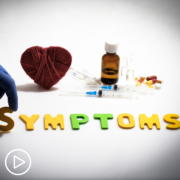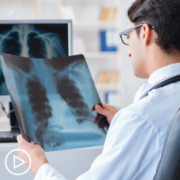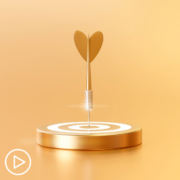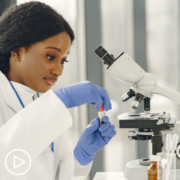What Are Common MPN Symptoms?
What Are Common MPN Symptoms? from Patient Empowerment Network on Vimeo.
Dr. Jeanne Palmer, an MPN specialist, reviews the most common symptoms associated with essential thrombocythemia (ET), polycythemia vera (PV), and myelofibrosis (MF).
Dr. Jeanne Palmer is a hematologist specializing in myeloproliferative neoplasms (MPNs) and bone marrow transplant at the Mayo Clinic in Arizona. Dr. Palmer also serves as Director of the Blood and Marrow Transplant Program and is Vice Chair and Section Chief for Hematology. Learn more about Dr. Palmer, here.
Related Programs:
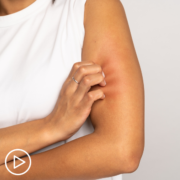
|

|

Thriving with an MPN | What You Should Know About Care and Treatment |
Transcript:
Katherine Banwell:
Would you walk us through the common symptoms of each of the MPNs? Let’s start with essential thrombocythemia.
Dr. Jeanne Palmer:
Right. So, there are a number of shared symptoms throughout all the diseases and when we start to figure out how to categorize them, they call into several different categories. The first one is inflammation-related symptoms. We know that the inherent pathway that’s dysregulated or that causes these diseases to happen can also result in significant inflammation in a person, that can result in things like fevers, night sweats, weight loss, and overall feeling really fatigued and poorly, which is something that it seems to be much more prevalent in patients with MPNs, all sorts of them, actually.
The next set of symptoms is related to microvasculature, so all the little blood vessels. And sometimes we think, oh, maybe that’s because there’s too many red blood cells or platelets and the blood become viscous. It’s probably more related to the actual dysregulation of that JAK2 pathway, which is inherent to all the myeloproliferative diseases and as a result, the little blood vessels can clamp down and that can give people headaches, visual changes, numbness and tingling in the hands and feet, and even can cause sort of a painful rash called erythromelalgia in the body.
So, these are things that can happen that are probably less appreciated side effects of the disease. And finally, there’s spleen-related symptoms. The spleen is in the left upper quadrant of the abdomen and it’s an organ that generally is about 12 centimeters in length, 10 to 12, but in patients with myeloproliferative diseases it can be enlarged. And as a result of an enlarged spleen people can have feeling like they get fuller early. So, if you’re eating a meal, all of the sudden you can only eat half of that meal versus the whole meal.
Discomfort or pain in the left upper quadrant. Sometimes it’s much more noticeable when you like bend over to tie your shoes. And then sometimes people can actually, when the spleen gets really big, the blood flow can be impaired towards the end of it which can cause some of the spleen tissue to die, and that can be painful. So, these are things that if somebody does start to notice that they’re having fullness in the left upper quadrant, pain, stuff like that, that that may be related to spleen symptoms.
Katherine Banwell:
What about PV or polycythemia vera, what are the symptoms?
Dr. Jeanne Palmer:
So, all of these sorts of relate to all of the myeloproliferative diseases. So, one other one that I didn’t mention, and this is actually more in PV than others, is itching. Itching can be absolutely unbearable when somebody has PV. It’s particularly noticeable after taking a shower. So, a lot of times I’ve met patients who are like I haven’t been able to take a shower in years, because it causes such a high degree of itching.
Katherine Banwell:
Why a shower? Is it different from having a bath?
Dr. Jeanne Palmer:
Water on the body that can cause the problem. So, if people take hot showers, it’s even worse. Although I think that people sort of react to it differently. Usually what patients end up doing is more like sponge bath type of things, rather than actually being exposed to the water.
Taking colder showers or cooler showers can sometimes help mitigate that. But the itching, and even in the absence of a shower, people can have pretty severe itching, and that can also be one of the major side effects.

